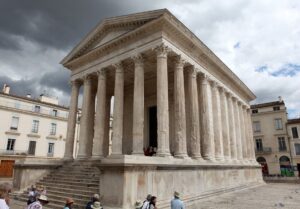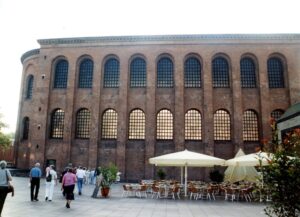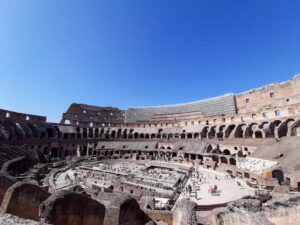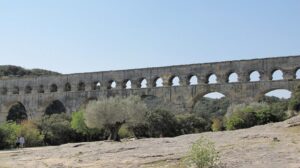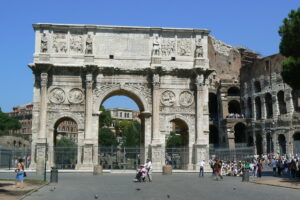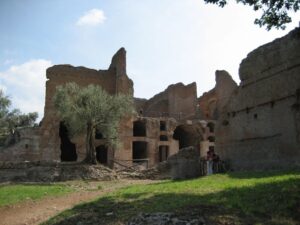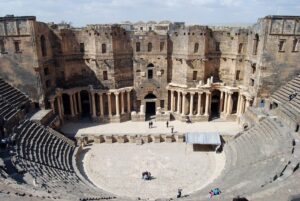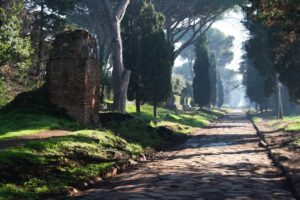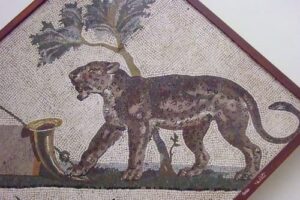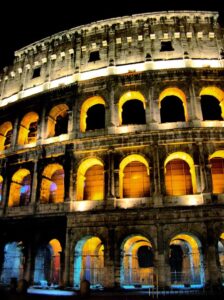Ancient Roman Buildings in the Roman Empire
Table of Contents
Architectural Ingenuity of Ancient Rome
Roman architecture is distinguished by its innovative use of materials and construction techniques. Unlike Greek architecture, which relied heavily on columns and post-and-lintel systems, Roman structures utilized arches, vaults, and domes. This allowed for larger and more durable buildings. The Romans perfected concrete, which enabled them to create monumental structures that have survived for centuries. Their architectural style combined elements from Etruscan and Greek traditions, resulting in an aesthetic that emphasized status and functionality.
The period of Roman architecture spans from the establishment of the Roman Republic in 509 BC to the 4th century AD. During this time, various building types emerged, each serving distinct purposes. The most important types include temples, basilicas, amphitheaters, aqueducts, triumphal arches, and residential buildings. Each of these structures show the social, political, and cultural values of the Roman Empire. The architectural innovations of this era laid the groundwork for future developments in Western architecture.
Temples
Roman temples were central to religious life and were often built in prominent locations. They typically had a raised platform, a cella for the deity’s statue, and a portico with columns. The design was influenced by both Etruscan and Greek styles. These structures were adorned with decorative elements, showcasing the wealth and power of the state. Temples served not only as places of worship but also as symbols of civic pride.
Basilicas
The basilica was a multifunctional public building used for legal proceedings and gatherings. Initially, these structures had no religious significance. They were typically rectangular, with a central nave flanked by aisles. The Basilica Porcia, built in 184 BC, is one of the earliest examples. As Christianity spread, basilicas were adapted for religious use, becoming the prototype for early Christian churches. Their design facilitated large congregations, making them essential to the social fabric of Roman cities.
Amphitheaters
Amphitheaters were iconic structures used for public spectacles, including gladiatorial contests and public executions. The Colosseum in Rome is the most famous example, showing the Roman mastery of concrete and arch construction. These structures typically had a oval shape, allowing for optimal viewing from all angles. They were designed with tiered seating and complex underground facilities for staging events. Over 200 amphitheaters existed across the empire.
Aqueducts
Aqueducts transported water from distant sources to urban centers. They utilized gravity to move water through a series of channels and bridges. The Aqua Appia, built in 312 BC, was Rome’s first aqueduct. The Pont du Gard in France is one of the best preserved Roman aqueducts, featuring multiple tiers of arches. These structures were crucial for supplying public baths, fountains, and households, demonstrating the Romans’ advanced understanding of hydraulics and urban planning.
Triumphal Arches
Triumphal arches were monumental structures commemorating military victories and significant events. They typically featured a large archway flanked by smaller arches, adorned with sculptures and inscriptions. The Arch of Titus and the Arch of Constantine are notable examples. These arches served both as decorative elements and as propaganda, celebrating the achievements of emperors and the might of the Roman state. They became a symbol of Roman power and were often placed at key locations within cities.
Residential Buildings
Residential architecture in Rome varied greatly, depending on social status and wealth. The domus was a single-family home for the wealthy, featuring an atrium, peristyle, and gardens. In contrast, insulae were multi-story apartment buildings for the lower classes, often overcrowded and lacking basic amenities. The layout of these buildings was practical, with shops on the ground floor and living spaces above.
Baths
Public baths, or thermae, were essential to Roman social life. These complexes included hot and cold baths, exercise areas, and social spaces. The Baths of Caracalla and the Baths of Diocletian are among the largest and most elaborate examples. They showcased advanced engineering with underfloor heating systems and intricate mosaics. Bathing was a communal activity, showing the Romans’ emphasis on hygiene and social interaction. The architectural design of these baths facilitated large gatherings and leisure activities.
Theaters
Roman theaters were adaptations of Greek designs, featuring a semi-circular seating arrangement and a raised stage. The scaenae frons, or stage front, was elaborately decorated, often with columns and statues. The theater at Pompeii is a well-preserved example, demonstrating the integration of local materials and styles. These venues hosted various performances, from dramas to musical events, playing an important role in Roman entertainment culture. The architectural layout enhanced acoustics and visibility for audiences.
Fortifications
Roman fortifications included city walls, watchtowers, and military camps. The Aurelian Walls of Rome exemplify the defensive architecture of the third century, designed to protect against invasions. These walls were constructed using large blocks of stone and brick, often featuring battlements and gates. Fortifications were strategically placed to secure key locations and maintain control over territories. The engineering techniques used in these structures contributed to the longevity and security of Roman cities and borders.
Roads
Roman roads were crucial for military and trade purposes, facilitating the movement of armies and goods across the empire. They were constructed with multiple layers for durability. The Via Appia in Rome is well preserved and one of the earliest and most important roads. Roads were often lined with milestones and rest stops, enhancing travel efficiency. The extensive network of roads contributed to the cohesion and administration of the vast Roman Empire.
Bridges
Roman bridges were essential for crossing rivers and ravines, often utilizing the arch for structural support. The Roman Bridge of Córdoba in Spain is a notable example. These bridges were constructed with stone and concrete, allowing for significant spans. Many Roman bridges remain in use today, demonstrating their lasting impact on infrastructure. The innovative designs of Roman bridges influenced later engineering practices throughout history.
Canals
Canals were constructed for irrigation, drainage, and navigation. They played a vital role in agricultural development and urban planning. Roman engineers designed canals to optimize water flow and manage resources effectively. Some navigational canals facilitated trade and transportation, connecting different regions.
Dams
Roman dams were built to control water flow for irrigation and flood prevention. These structures varied in design, including earth-filled and masonry gravity dams. The introduction of hydraulic mortar allowed for more robust constructions. Dams were strategically placed to enhance agricultural productivity and protect settlements. The engineering techniques used in dam construction laid the groundwork for future water management systems.
Urban Planning
Roman urban planning was characterized by a grid layout, with a central forum surrounded by public buildings. This design facilitated efficient movement and access to services. Streets were typically straight and wide, accommodating both pedestrians and vehicles.
Gardens
Gardens featured ornamental plants, fountains, and sculptures. Wealthy Romans cultivated elaborate gardens, while smaller urban homes had modest green spaces. The design of gardens reflected cultural influences from Greece and Egypt. Gardens served as private retreats and social spaces.
Mosaics
Mosaics were a popular decorative element in Roman architecture, used to embellish floors and walls. They featured designs made from colored stones and glass. The technique of opus tessellatum allowed for detailed imagery, often depicting scenes from mythology or daily life. Mosaics were a symbol of wealth and sophistication, commonly found in public buildings and affluent homes.
Hypocausts
The hypocaust system was an innovative method of underfloor heating used in Roman baths and homes. It involved raising the floor on pillars to circulate hot air from a furnace. This technology improved comfort and hygiene, allowing for heated rooms. Hypocausts were a precursor to modern central heating systems.
Columns and Orders
Roman architecture employed various column orders, including Doric, Ionic, and Corinthian. The Romans adapted these styles, creating the Composite and Tuscan orders. Columns were often used decoratively, even when not structurally necessary. The use of columns in public structures reinforced the connection between architecture and civic identity, symbolizing stability and order.
Spiral Stairs
Spiral staircases were introduced in Roman architecture to save space and enhance design. They became common in temples, baths, and public buildings. The construction of spiral stairs allowed for efficient vertical movement within structures. This architectural feature influenced later designs in medieval and Renaissance architecture.
Architectural Influence
The architectural legacy of Rome has profoundly influenced subsequent cultures and styles. The principles of Roman design, including the use of arches, domes, and concrete, laid the foundation for future architectural developments. The Renaissance saw a revival of classical styles, drawing inspiration from Roman structures. Today, Roman architecture continues to inspire modern buildings, evident in government structures and public spaces worldwide. The enduring impact of Roman architecture is a testament to its significance in the history of human civilization.
Read more about other key aspects of the Roman Empire:
- Ancient Roman Architecture and Its Legacy
- Ancient Roman Economy: Economic Insights of Ancient Rome
- Ancient Roman Coin Abbreviations
- Indo-Roman Maritime Trade
- Roman Maritime Symbolism
- Roman Mining
- Roman Ports and Maritime Infrastructure
- Roman River Networks
- Seaborne Trade in the Roman Empire: Routes, Ships, and Seasonal Logistics
- The Evolution of Roman Currency: A Historical Overview
- The Roman Navy and Maritime Security
- Borders of the Roman Empire
- Climate of the Roman Empire
- Demography of the Roman Empire
- Honorary Titles for Cities in the Roman Empire
- Languages of the Roman Empire
- Understanding Roman Law: Structure and Influence
